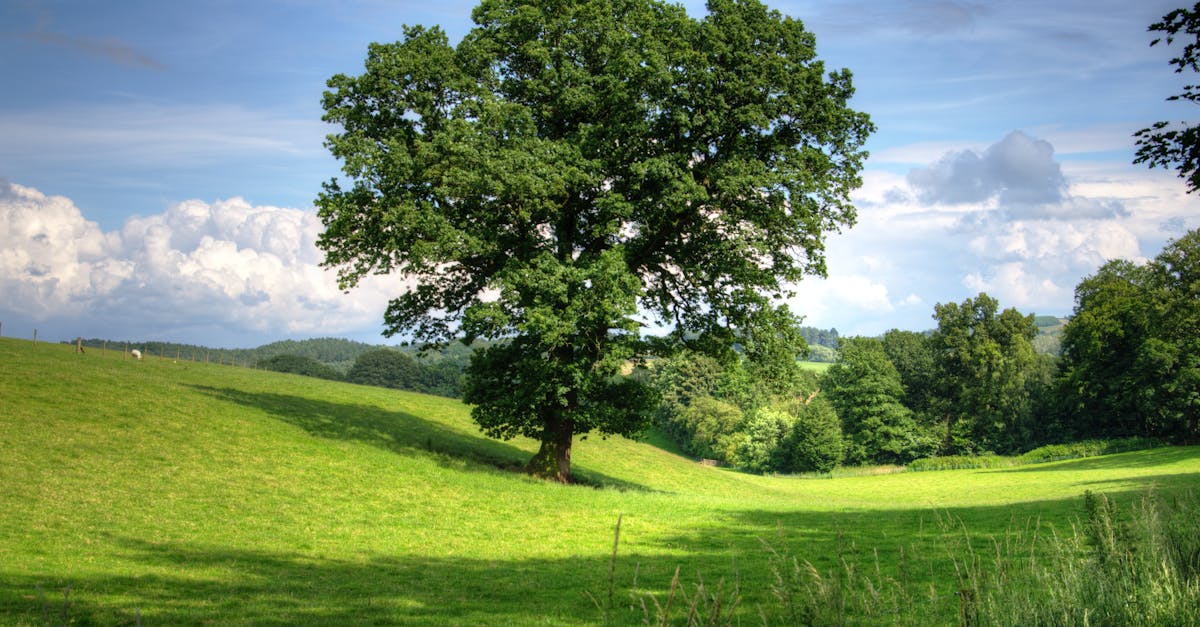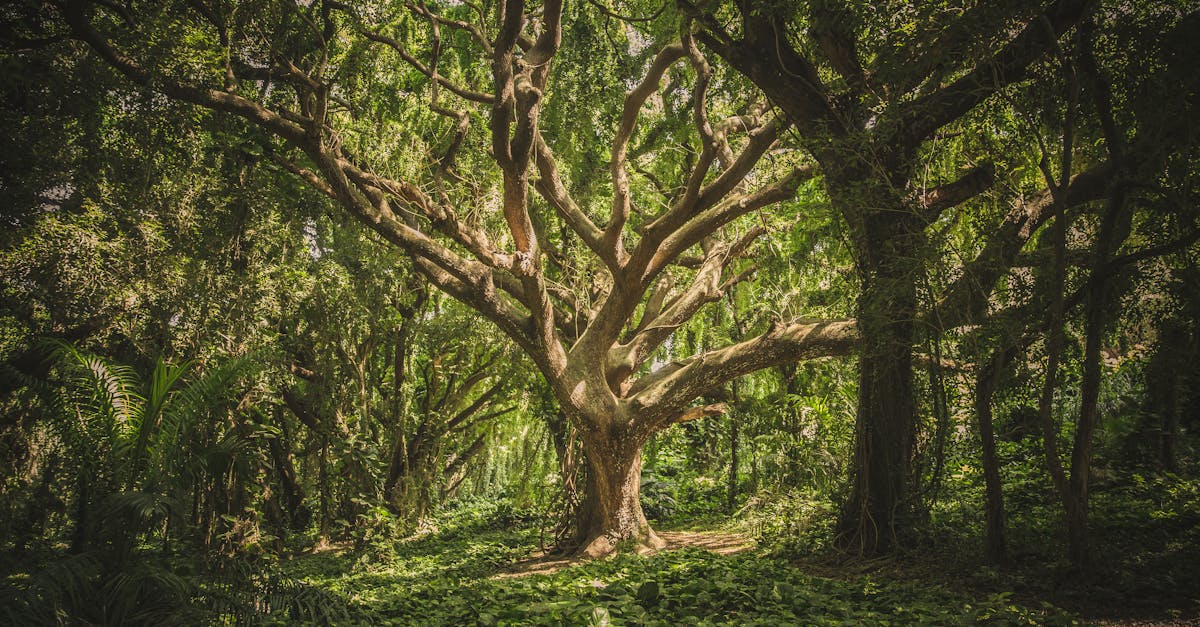
Benefits of Hiring a Professional Arborist for Tree Assessments
When it comes to maintaining the health and safety of trees on your property, hiring a professional arborist for tree assessments offers a range of benefits. A trained arborist possesses the expertise and knowledge to accurately assess the condition of trees and identify potential risks. By seeking the services of a professional, you can ensure that your trees are properly cared for and any issues are addressed promptly. Additionally, professional arborists are equipped with the necessary tools and equipment to conduct thorough assessments, providing you with detailed insights into the health of your trees. If you're searching for reliable tree care services, including tree risk assessment near me, consulting a professional arborist is an ideal choice for maintaining the well-being of your trees.
Analyzing Tree Canopy Density
Analyzing tree canopy density is a crucial aspect of a comprehensive tree assessment. By evaluating the density of a tree's canopy, arborists can determine the health and vigor of the tree, identifying any potential issues that may affect its stability or longevity. Through this analysis, professionals can assess the overall condition of the tree and develop management strategies to ensure its well-being and safety. Tree canopy density evaluation is particularly important when conducting a Tree Risk Assessment near me, as it provides essential information about the tree's structural integrity and potential risks it may pose to its surroundings.
Moreover, analyzing tree canopy density allows arborists to assess the tree's ability to effectively photosynthesize and provide ecosystem services. A dense canopy indicates a healthy and thriving tree, capable of sustaining itself and supporting the local environment. On the other hand, sparse canopy density may indicate underlying issues such as disease, insect infestation, or environmental stressors. Understanding the canopy density of a tree is vital in making informed decisions regarding its care and maintenance, ensuring that it can continue to thrive and contribute positively to its surroundings. When considering a Tree Risk Assessment near me, assessing tree canopy density is a fundamental step in determining the overall health and condition of the tree.
Steps Involved in a Comprehensive Tree Assessment
Steps involved in a comprehensive tree assessment typically include evaluating the overall health and condition of the tree. This assessment may involve inspecting for signs of pests, disease, and decay, as well as assessing the structural integrity of the tree. Additionally, measuring the tree trunk diameter is a crucial step in determining the age and overall growth rate of the tree. Seeking professional assistance by searching for "Tree Risk Assessment near me" can provide accurate measurements and insights into the tree's development.
Moreover, analyzing the tree canopy density plays a vital role in understanding the tree's ability to photosynthesize and provide shade. By observing the density of the canopy, arborists can assess the tree's vitality and potential risks associated with weak or overcrowded branches. In conjunction with canopy density analysis, inspecting the tree root system underground is essential for determining the tree's stability and overall health. Careful examination of the root system can reveal any root rot or damage that may compromise the tree's structural integrity.
Measuring Tree Trunk Diameter
Measuring tree trunk diameter is a fundamental aspect of a comprehensive tree assessment. This measurement not only provides valuable information about the tree's size and age but also plays a crucial role in determining its overall health and structural stability. Arborists typically use a specialized tool like a diameter tape to accurately measure the diameter at breast height (DBH), which is usually 4.5 feet above the ground. As part of tree risk assessment near me, assessing the trunk diameter helps in evaluating the tree's ability to support its canopy and withstand external stresses such as strong winds or heavy snow loads.
The information obtained from measuring tree trunk diameter is essential for making informed decisions regarding tree care and maintenance. By having a precise measurement of the trunk diameter, arborists can better assess the tree's growth rate, structural integrity, and potential risks it may pose to its surroundings. Additionally, this measurement serves as a baseline for monitoring the tree's condition over time and implementing appropriate measures to ensure its long-term health and safety. In essence, including trunk diameter measurement in a tree assessment is vital for promoting the well-being of trees and enhancing the safety of their environment.
Safety Precautions During Tree Assessments
Safety precautions are crucial during tree assessments to ensure the well-being of both the arborist and the surroundings. Before initiating any assessment, it is essential to inspect the area for any potential hazards such as hanging branches, unstable ground, or nearby power lines. The use of personal protective equipment (PPE) like gloves, helmets, and safety glasses is imperative to minimize the risk of injuries. Conducting a thorough evaluation of the work area and being mindful of the surroundings helps mitigate potential dangers that may arise during the assessment. Prioritizing safety not only protects the arborist conducting the assessment but also prevents any harm to nearby structures or individuals. It is vital to approach each assessment with caution and a focus on safety to ensure a successful outcome and minimize risks. Always look for a professional arborist specializing in "Tree Risk Assessment near me" to guarantee a safe and efficient evaluation process.
Inspecting Tree Root System
Inspecting the root system is a crucial aspect of a thorough tree assessment. The roots provide stability, support, and essential nutrients to the tree, making it vital to examine their health and condition. Tree risk assessment near me includes evaluating the root system for signs of decay, damage, or disease that could compromise the tree's stability and overall health.
Arborists inspect the root system by examining the presence of root rot, root collar disorders, girdling roots, and other potential issues that may impact the tree's stability and safety. Understanding the root system's health is essential in determining if the tree poses any risks to its surroundings, such as nearby structures, utilities, or pedestrian pathways. Tree risk assessment near me involves a comprehensive evaluation of the root system to ensure the tree's longevity and minimize any potential hazards that may arise.
FAQS
What is the purpose of a tree assessment?
A tree assessment is conducted to evaluate the health, structure, and safety of trees on a property.
Why should I hire a professional arborist for a tree assessment?
Hiring a professional arborist ensures that the assessment is thorough, accurate, and conducted with safety in mind. Arborists have the expertise and tools needed to properly assess trees.
What are some common steps involved in a comprehensive tree assessment?
Common steps in a tree assessment include analyzing tree canopy density, measuring tree trunk diameter, inspecting tree root systems, and evaluating overall tree health.
How is tree canopy density analyzed during a tree assessment?
Tree canopy density is typically analyzed by visually assessing the amount of foliage and branches present in the tree canopy, which can indicate the tree's overall health and vigor.
What safety precautions should be taken during a tree assessment?
Safety precautions during a tree assessment include wearing appropriate personal protective equipment, ensuring proper training for climbing trees, and using safety harnesses when working at heights.
Why is inspecting the tree root system an important part of a tree assessment?
Inspecting the tree root system is crucial as it helps determine the stability and health of the tree. Issues with the root system can impact the tree's overall structure and longevity.


